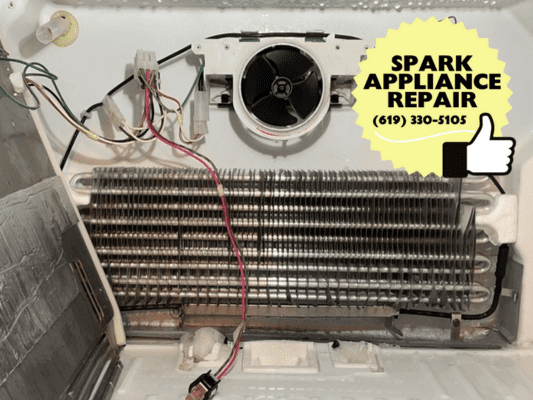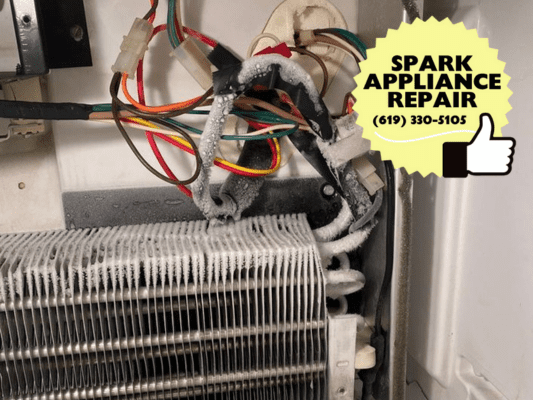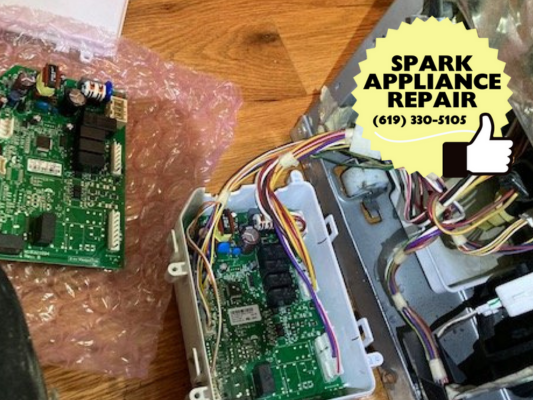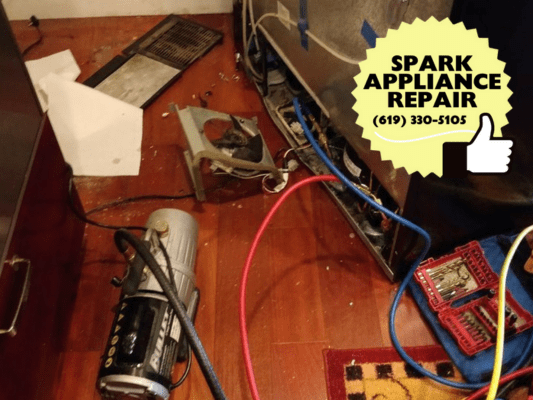
Save Your Food and Money: Quick Fixes for Common Refrigerator Problems
Dealing with common refrigerator problems can be a real hassle. From mysterious leaks to strange noises, these issues can disrupt your daily routine. Understanding the historical context of refrigerators and their evolution can shed light on troubleshooting techniques for modern appliances. By delving into the past, we gain insights that help tackle present-day challenges effectively. Let’s explore how knowing the roots of refrigeration technology can empower you to conquer those pesky fridge glitches.
Identifying Problems
-
Not Cooling
Refrigerators not cooling properly can lead to food spoilage. Possible causes include a faulty thermostat, dirty condenser coils, or a malfunctioning evaporator fan. To troubleshoot, check the temperature settings, clean the coils, and ensure proper airflow inside. Addressing this issue promptly is crucial to prevent food from going bad. -
Noise
When your fridge makes strange noises like buzzing or rattling sounds, it could indicate underlying issues. These noises might stem from a defective compressor or worn-out fan motors. To resolve this problem, unplug the refrigerator and inspect for loose parts or debris that may be causing the noise. Timely identification and fixing of these unusual sounds are essential to avoid further damage. -
Water Leakage
Water leakage in refrigerators commonly results from clogged defrost drain tubes or damaged water inlet valves. This issue can lead to mold growth and electrical hazards if left unattended. Diagnose by checking for blockages in the drain tube and ensuring proper alignment of the water inlet valve with its connections within your fridge. -
Frost Buildup
Understanding why frost buildup occurs helps maintain your refrigerator's efficiency. Excessive frost can impede proper cooling functions over time if not addressed promptly through manual defrosting methods like turning off the appliance and allowing ice to melt naturally before cleaning up excess moisture.
Causes and Solutions
-
Thermostat Issues
Accurate diagnosis of thermostat issues is vital for effective solutions. Using tools to diagnose different problems helps in finding suitable fixes promptly. Adjustments play a significant role in optimizing refrigerator performance by tweaking temperature settings or aligning doors correctly. Properly diagnosing thermostat issues allows for necessary adjustments to be made where needed, ensuring the refrigerator functions optimally. Tips on adjusting components like temperature controls can address specific problems efficiently.. -
Faulty Compressor
Refrigerator problems often stem from a faulty compressor. Recognizing common signs like the fridge not cooling properly or unusual noises is crucial. These signs can help pinpoint specific issues, aiding in timely repairs. When dealing with a faulty compressor, various fixes exist. An overview of common solutions includes checking for power supply issues and cleaning the coils. For more complex problems, seeking professional assistance is advisable.
Maintenance Tips
common refrigerator problems
. By cleaning it frequently, you can prevent issues like mold growth and food contamination. For routine maintenance, wipe down the interior with a mixture of water and vinegar every month.Maintaining clean coils is essential for optimal refrigerator performance. Dust and debris accumulation on the condenser coils can lead to cooling inefficiency. To avoid this, vacuum or brush the coils every six months to ensure they are free from dirt buildup.
Proper vent clearance is vital for efficient airflow within your refrigerator. Blocked vents can hinder proper cooling and cause temperature fluctuations inside the appliance. Make sure there is enough space around the vents by keeping items away from them to allow air circulation.
Adjusting the temperature settings according to manufacturer recommendations helps in preserving food freshness and reducing energy consumption.
Energy Efficiency
Saving Tips
energy efficiency
and cut down on electricity costs with your refrigerator, consider practical steps. Proper organization of items inside the fridge can improveairflow
, allowing for more efficient cooling. Regularly defrosting the freezer prevents ice build-up, which can reduce energy consumption. Adjusting the temperature settings to more energy-efficient levels helps in saving power over time. Implementing these simple techniques not only reduces your carbon footprint but also results in long-term benefits for both the environment and your wallet. By optimizingairflow
through smart storage practices and regular maintenance like defrosting, you ensure that your refrigerator operates at its peak efficiency level. Setting appropriate temperature controls avoids unnecessary energy wastage while keeping your food fresh.- Organize items effectively for better airflow
- Regularly defrost to prevent ice buildup
- Adjust temperature settings for energy efficiency
- Long-term benefits include reduced electricity bills and environmental impact
Upgrade vs. Repair
Cost Analysis
common refrigerator problems
, it’s crucial to weigh the costs of repairing versus replacing your appliance. Factors like the age of the fridge, extent of damage, and repair expenses all influence this decision. Consider not only immediate repair costs but also long-term savings from energy-efficient models. To conduct a cost analysis effectively, start by researching the average lifespan of your current refrigerator type. Compare this with repair estimates and potential energy savings from upgrading to a newer model. By evaluating these aspects, you can make an informed choice that aligns with your budget and long-term needs.Lifespan Considerations
To extend your refrigerator’s lifespan, focus on routine maintenance tasks like cleaning coils regularly, ensuring proper ventilation around the appliance, and promptly addressing any issues to prevent further damage or wear-and-tear. By caring for your fridge properly based on its specific type and usage patterns, you can maximize its durability and performance over time.
Choosing a Technician
-
Qualifications
When facingcommon refrigerator problems
, it is crucial to hire technicians with the right qualifications. Look for certifications, ensuring expertise in refrigeration systems. Trained experts can efficiently tackle complex issues, providing accurate solutions promptly. Relying on experienced professionals is key when dealing with refrigerator problems. Seasoned technicians possess the knowledge to quickly identify and fix issues, preventing further damage. When seeking reliable repairs, prioritize technicians who have a proven track record of successfully resolving various refrigerator malfunctions. -
Reviews
Reading reviews and testimonials can guide you in selecting a reputable repair service for your refrigerator troubles. Reviews offer valuable insights into the quality of service provided by technicians, helping you make an informed decision. Evaluate reviews effectively by considering factors like promptness, professionalism, and overall customer satisfaction levels.



DIY Repairs
Simple Fixes
common refrigerator problems
, simple fixes can be a lifesaver. For instance, if your fridge is not cooling properly, check the temperature settings first. Sometimes adjusting them can solve the issue without needing a repair technician. Another common problem is a clogged defrost drain; simply cleaning it out with hot water and mild soap can do the trick. To save time and money, try troubleshootingminor refrigerator problems
on your own before calling in a repair technician. Issues like strange noises or excessive frost buildup might just require some basic maintenance or part replacement that you can handle yourself.Tools Needed
basic refrigerator repairs
is essential to avoid causing more damage during DIY fixes. Some essential tools include a multimeter for testing electrical components, screwdrivers of various sizes for disassembling parts, and pliers for gripping and maneuvering small components.Assembling a basic toolkit for
refrigerator maintenance
doesn’t have to be complicated; having these tools handy can make handling minor issues much easier and cost-effective than hiring a professional repair technician every time there’s an easily fixable problem.Final Remarks
Choosing a reliable technician can be a game-changer. And don’t forget, some repairs can be done yourself if you’re feeling handy. So, roll up your sleeves and get that fridge back in top shape!
Frequently Asked Questions
Refrigerator problems like inconsistent temperature, unusual noises, water leakage, and ice buildup are common issues to be aware of. Keeping an eye on these signs can help you address the problem promptly before it worsens.
To enhance your refrigerator’s energy efficiency, ensure proper sealing of the door, set the right temperature levels, clean condenser coils regularly, and avoid overloading it. These simple steps can significantly reduce energy consumption and extend the appliance’s lifespan.
When deciding between repairing or upgrading your refrigerator, consider factors like age, cost of repairs versus a new appliance, energy efficiency ratings, and frequency of breakdowns. Sometimes investing in a newer model with improved features may be more beneficial in the long run.
DIY repairs on refrigerators can be risky if you’re not experienced as they involve electrical components and complex systems. It’s advisable to consult a professional technician for safety reasons and to prevent causing further damage to the appliance.
Selecting a reputable technician involves checking qualifications/certifications, reading reviews from previous customers online or asking for recommendations from friends/family. Ensure they have experience with your specific brand/model of refrigerator for efficient troubleshooting and repair services.






